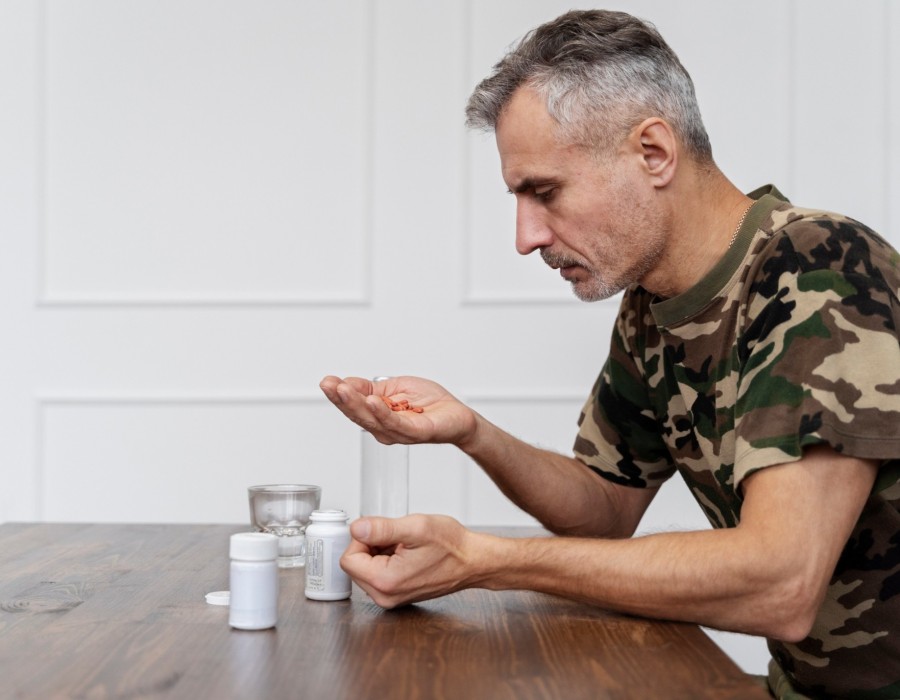Understanding Anavar and Its Role in Low Testosterone Treatment
When it comes to performance-enhancing compounds, understanding how each substance works is critical before using it for therapeutic purposes. Anavar (Oxandrolone) and testosterone are two of the most discussed anabolic agents. Both interact with androgen receptors but produce significantly different effects due to their molecular structure and biochemical activity. This distinction is crucial when considering Anavar for low testosterone treatment, as its benefits and limitations are very different from traditional testosterone replacement therapy (TRT).
How Anavar (Oxandrolone) Works
Anavar was first developed in 1964 as a medical treatment for muscle wasting conditions. It was prescribed to patients recovering from major surgery, severe trauma, or chronic infections, as well as to those suffering from osteoporosis due to its ability to enhance bone mineral density. Its mechanism of action is based on selective androgen receptor activation, triggering a series of anabolic effects that promote tissue growth without excessive androgenic side effects.
Once administered, Anavar supports:
- Positive Nitrogen Balance: Essential for creating an anabolic environment conducive to muscle retention.
- Satellite Cell Activation: Stimulating muscle regeneration and hypertrophy.
- Increased IGF-1 Production: Promoting tissue recovery and metabolic support.
Compared to testosterone, Anavar has a much higher anabolic-to-androgenic ratio. This means users typically experience lean muscle growth without significant virilizing side effects like hair loss, acne, or deepened voice. However, because Anavar is a 17α-alkylated oral steroid, it can stress the liver, making liver enzyme monitoring crucial during use.
How Testosterone Works and Its Role in TRT
Testosterone is the body’s primary male hormone and plays a key role in muscle mass, bone density, red blood cell production, libido, mood, and energy regulation. In cases of hypogonadism or age-related testosterone decline, testosterone replacement therapy (TRT) is often prescribed to restore hormonal balance.
Testosterone works by:
- Binding to androgen receptors and initiating gene transcription for muscle protein synthesis.
- Converting to DHT (dihydrotestosterone), which drives androgenic traits like facial hair and voice depth.
- Converting to estradiol (E2), which regulates bone health and libido.
- Supporting satellite cell proliferation, essential for muscle repair after training.
Unlike Anavar, injectable testosterone bypasses the liver and is not hepatotoxic. However, it suppresses the hypothalamic-pituitary-gonadal (HPG) axis, meaning that natural testosterone production is reduced while on TRT.
Anavar for Low Testosterone Treatment: Benefits and Limitations
When considering anavar for low testosterone treatment, it’s important to understand that Anavar is not a direct replacement for testosterone. Instead, it is sometimes used as an adjunct therapy to support muscle mass, strength, and recovery in men with low testosterone levels.
Potential Benefits:
- Lean Muscle Preservation: Anavar is highly effective at preventing muscle loss during periods of low testosterone or caloric deficit.
- Strength Gains: Users often report improved gym performance and endurance even at moderate doses.
- Lower Androgenic Side Effects: Compared to testosterone, Anavar has fewer risks of acne, hair loss, or prostate enlargement.
- No Aromatization: Anavar does not convert to estrogen, meaning there is minimal risk of gynecomastia (male breast tissue growth).
Limitations:
- Anavar does not replace all the physiological roles of testosterone (such as libido regulation, mood stabilization, and fertility support).
- Prolonged Anavar use can further suppress natural testosterone production, which can worsen hypogonadism if not combined with proper hormonal therapy.
- Oral administration stresses the liver, which requires routine liver function monitoring.
Because of these factors, anavar for low testosterone treatment is best used under strict medical supervision and often in combination with TRT rather than as a standalone therapy.
Health Risks and Considerations
Like any anabolic steroid, Anavar carries potential risks, particularly when abused or used at high doses:
- Liver Stress: As a C17-alpha-alkylated oral steroid, Anavar can elevate liver enzymes and cause hepatotoxicity with prolonged use.
- Hormonal Suppression: Although milder than some other steroids, Anavar can reduce natural testosterone production.
- Cholesterol Imbalance: It can increase LDL cholesterol and lower HDL cholesterol, raising cardiovascular risk.
- Mood Changes: Irritability, aggression, or mood swings may occur with improper use.
To safely explore anavar for low testosterone treatment, regular bloodwork is essential, including liver function tests, lipid profile, and testosterone levels. Post-cycle therapy (PCT) may also be required to restart natural testosterone production if Anavar is discontinued.
Conclusion
Anavar is a powerful anabolic compound with unique properties that make it appealing for muscle preservation and lean growth. However, while anavar for low testosterone treatment can help improve muscle mass and strength in men with low T levels, it is not a substitute for full hormonal replacement therapy. Its use should be carefully planned, medically supervised, and combined with lifestyle strategies (diet, resistance training, recovery) to optimize results while minimizing risks.
For more information visit our site:- Steroidsstores






Comments